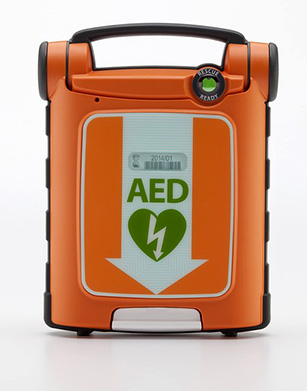Nutritional Value: Explaining the Female Athlete Triad
In 1997, The American College of Sports Medicine (ACSM) issued its original position on the Female Athlete Triad. The triad, a trio of troublesome health concerns occurring in females that exercise, had been noted for more than 30 years.

Another decade of research culminated in the ACSM updating the triad’s definition and its complications (2007). The International Olympic Committee (IOC) released the first guidelines for the treatment, and prevention, of the triad in 2006.
So, are you familiar with the Female Athlete Triad and its signs, as well as the health risks involved? And most importantly, how to help your athletes steer clear of it?The triad is characterized by three interrelated medical concerns that occur on a spectrum:
- Energy (caloric) availability (from optimal to low with or without an eating disorder.
- Menstrual irregularities (from normal to hypothalamic amenorrheathe loss of three or more consecutive menses, or the failure to begin menstruating by age 15).
- Bone health problems (optimal bone health to osteoporosis).
While bringing a much-needed awareness to this spectrum of disorders, the title erroneously suggests that only athletes or intensely competitive girls and women are at risk. In reality, any physically active female who under-eats or overexercises is a candidate for the triad. (Note: Male athletes who fail to adjust their dietary intake to compensate for energy expended during exercise also suffer from triad-associated complications.)
The 2007 ACSM positional stand also emphasizes that low energy (caloric) availability is the cornerstone from which the rest of the triad stems. Full recovery from the female athlete triad is not possible unless this key component is corrected.
An energy drain scenario
Energy availability is the amount of dietary energy or calories remaining for other body functions after exercise training. A person triggers the triad when consuming fewer calories than needed to compensate for activity level.
Sometimes, active individuals end up in an energy drain due to intense training schedules and inadvertently consuming insufficient calories. More often, however, it happens in athletes who slip into a pattern of rigid or restrictive eating to deliberately lose weight quickly (or maintain excessively low weight) in an attempt to improve their appearance or performance.
In response to consuming insufficient calories, the body attempts to conserve energy by shutting down the reproductive system via the hypothalamic-pituitary-ovarian axis. As ovaries produce less and less estrogen, menses become irregular and amenorrhea may resultthree or more consecutive cycles missed or failure to commence menses by age 15.
Once considered a normal part of training or the hallmark of peak fitness, amenorrhea is now viewed as a serious sign that something is amiss in the complex female reproductive system. (Note: In males, complications ensue due to a low or inadequate testosterone level.)
With low levels of estrogen that mimic those seen during menopause, a physically active females bone health is quickly put at risk. Studies show that amenorrheic women between the ages of 16 and 30 lose as much as two to five percent of their bone mass a year.
Even more troublesome for preteens and teens is the failure to build bone (at the rate of two to four percent per year) commensurate with peers during peak bone-building years (ages 12 to 20). The end result is an immediate increased risk for stress fractures and the inability to fully obtain peak bone mass resulting in osteopenia (reduced bone density for ones age), and possibly the early onset of osteoporosis (brittle bones that break easily).
What’s the harm?
The Female Athlete Triad has short- and long-term consequences on an athlete’s health. Per the NCAA’s Sports Medicine Handbook, immediate consequences of consuming inadequate calories include: fluid and electrolyte imbalances, fatigue, loss of concentration and motivation, depression, poor sleep and sub-par workouts and performances.
Occurring before puberty, an energy deficiency suppresses growth and delays sexual development. Further down the road are nutrient deficiencies, such as iron-deficiency anemia, significant loss of lean muscle mass, stress fractures and lingering overuse injuries (e.g., tendonitis), an increased risk of developing a full-blown eating disorder, and potentially, difficulty conceiving or early-onset osteoporosis.
 Who’s at risk?
Who’s at risk?
Any level of athlete can suffer from the triad, especially those involved in appearance or weight-conscious sports that favor a specific look or body type (gymnastics, diving), sports that feature skimpy uniforms (volleyball, swimming) or favor a lower body mass (cross country running and cycling), as well as athletes in weight-class sports (rowing, wrestling).
Girls who fear or struggle with normal puberty-induced body changes also are at risk, as well as those who develop early compared to peers.
Watching for trouble signs
Some potential red flags to be alert for when working with physically active females include:
- Rigid or restrictive eating (e.g., too busy or forgetting to eat meals, avoidance of all dietary fat, eliminating entire food groups, eating same few safe foods).
- Unbalanced vegetarian eating style (eliminates meat but makes little or no attempt to obtain needed nutrients from soy foods and cooked beans).
- Compulsive or non-purposeful exercise (e.g., excessive exercise beyond a sensible training program, exercising that impedes recovery from injury, inability to take a rest day).
- Highly self-critical with low self-esteem and a poor body image.
- Poor coping skills to deal with emotional stress.
- Exercise-induced amenorrhea.
- Recurrent stress fractures.
Prevention is key
Consuming sufficient calories to compensate for exercise energy expenditure is the key to preventing the triad. A healthy athlete naturally does this or quickly does so once educated on her needs. Provide sound, credible nutrition information or refer athletes to appropriate resources, and refrain from making comments about an athlete’s weight or appearance.
Dietary changes alone rarely completely undo an energy drain scenario. Simply taking calcium supplements, for example, might keep an amenorrheic athlete in calcium balancehowever, the added calcium does not build bone as it can’t compensate for a too-low estrogen level.
Other lifestyle factors, such as exercise habits (number of rest days and volume/intensity of training), also must be addressed, as well as acquiring skills and strategies to better manage stress.
Due to the impact on bone health, pre-participation exams should include screening for the triad. Furthermore, any time menses become irregular or stop (or fail to begin by age 15), a thorough medical evaluation by a knowledgeable sports-minded physician is warranted.
An athlete might not exhibit all complications of the triad simultaneously if presenting with one component of the triad, she should be assessed for the others. Poor body image and disordered eating are often at the root of a female’s reluctance to fuel herself properly, hence a multidisciplinary treatment approach with a medical doctor, registered dietitian and therapist is strongly recommended.





